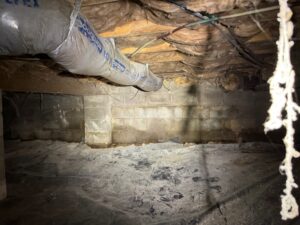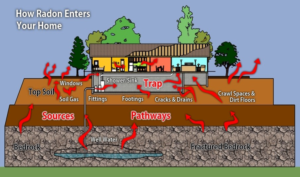
Hey there! You’re in the right place if you’re wondering about radon and crawlspace foundations. Let me break it down for you in simple terms.
Understanding Radon
Imagine you’re in your cozy home, maybe it’s an older one with a crawlspace instead of a basement. Crawlspace foundations are common in many houses, especially in areas with varying soil types or where basements aren’t as practical.
Now, radon is this sneaky gas that can seep into your home from the soil beneath it. It’s colorless, odorless, tasteless—basically, it’s invisible to our senses. But here’s the kicker: radon is the second leading cause of lung cancer after smoking. According to the Environmental Protection Agency (EPA), radon is responsible for about 21,000 lung cancer deaths each year in the United States alone.
Why Radon Is Dangerous
So, back to your crawlspace. Even though it’s not a full basement, it’s still in contact with the ground. And guess what? Radon doesn’t discriminate—it can find its way into your home through any opening it can squeeze through, like cracks in the walls or floors.
Why Crawlspaces Are Susceptible
Here’s why a radon test matters: just because you have a crawlspace doesn’t mean you’re safe from radon. In fact, some homes with crawlspace foundations can have higher radon levels because of the way air circulates through these areas:
- Direct Contact with Soil: Crawlspaces are directly open to the soil underneath your home, which is the primary source of radon gas.
- Air Circulation: Crawlspaces can create a natural draft that pulls radon from the soil into your home.
- Cracks and Openings: Any cracks or openings in the foundation or walls of the crawlspace can provide pathways for radon to enter your living spaces.

Testing and Mitigation
A radon test is like a health check for your home. It measures the levels of radon gas inside, giving you peace of mind or letting you know if action is needed.
How Radon Testing Works
- Placement of the Device: A professional will place a radon testing device in the lowest lived-in level of your home, typically a basement or first floor.
- Measurement Period: The device, which can be a passive charcoal canister or an active continuous radon monitor, will measure radon levels over a few days to a week.
- Analysis: After the measurement period, the device is sent to a lab (for passive devices) or analyzed on-site (for active devices) to determine the radon concentration in your home.
Professionals performing radon tests are often certified by organizations such as the National Radon Proficiency Program (NRPP) or the National Radon Safety Board (NRSB), ensuring they have the necessary expertise and training to conduct accurate tests.
Types of Radon Mitigation Systems
If you find out your home has high radon levels, don’t panic! Several types of radon mitigation systems can effectively reduce radon levels in your home:
- Sub-Slab Depressurization: This is the most common method for homes with basements or slab-on-grade foundations. A pipe is inserted through the floor slab into the soil beneath, and a fan is used to draw the radon gas from under the slab and vent it safely outside.
- Sub-Membrane Depressurization: This system is ideal for homes with crawlspaces. A high-density plastic sheet is placed over the soil in the crawlspace, and a pipe and fan system is used to draw the radon from under the membrane and vent it outside. This method can reduce radon levels by up to 99%.
- Drain Tile or Sump Hole Depressurization: If your home has a drain tile system or a sump pit, these can be adapted for radon reduction. A pipe is connected to the existing drain tile or sump hole, and a fan is used to vent the radon gas outside.
- Block Wall Suction: For homes with hollow block walls, this system involves inserting pipes into the block walls and using a fan to draw radon out and vent it safely away from the home.
Take Action
So, to sum it up: whether you have a basement, a crawlspace, or even a slab foundation, radon can still be a concern. Getting a radon test is like putting on sunscreen—it’s a small step that can protect you from something serious down the road.
Stay safe, stay informed, and remember, knowledge is power when it comes to your home’s health. We encourage you to schedule a radon test to ensure your home is safe. Contact North Star Environmentals today to set up an appointment or to learn more about how we can help you protect your home from radon.
References:
- Environmental Protection Agency. (n.d.). Health Risk of Radon. Retrieved from EPA website.
- American Lung Association. (n.d.). Radon. Retrieved from ALA website.
- Environmental Protection Agency. (n.d.). Consumer’s Guide to Radon Reduction: How to Fix Your Home. Retrieved from EPA website.
